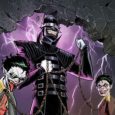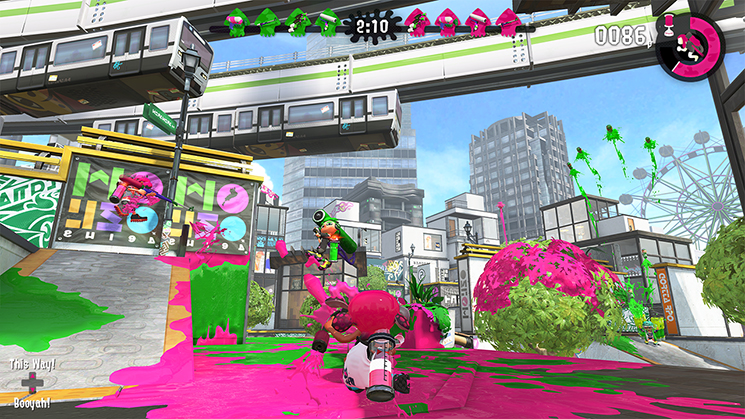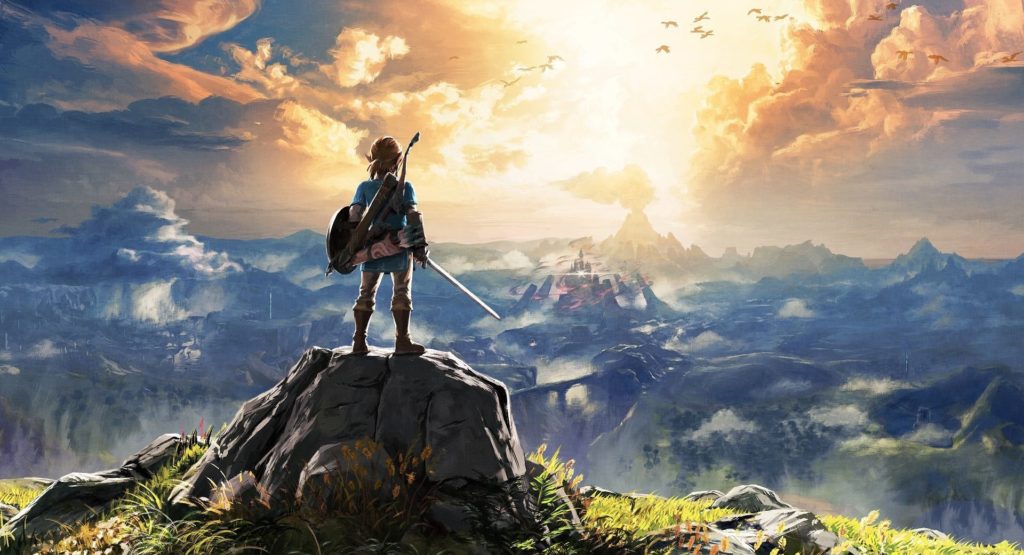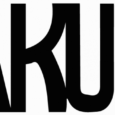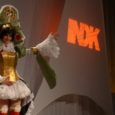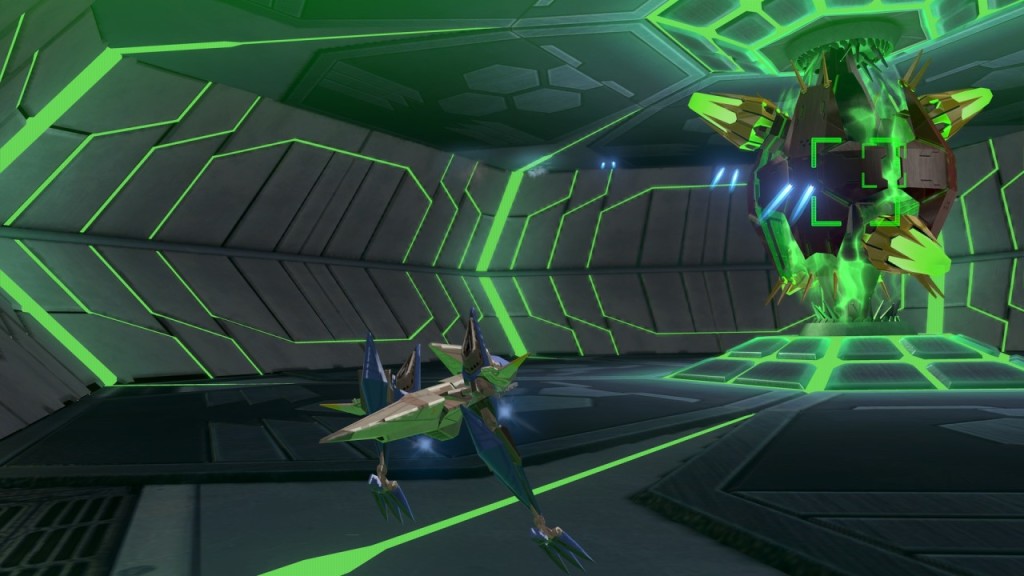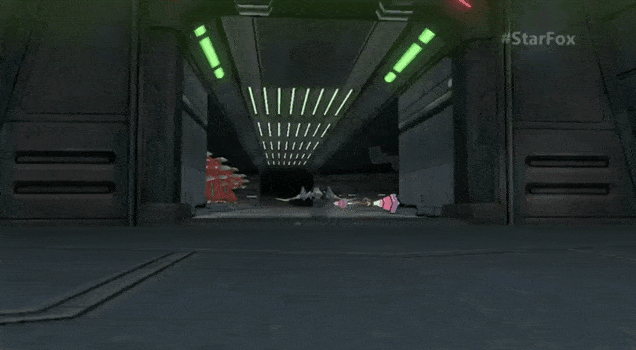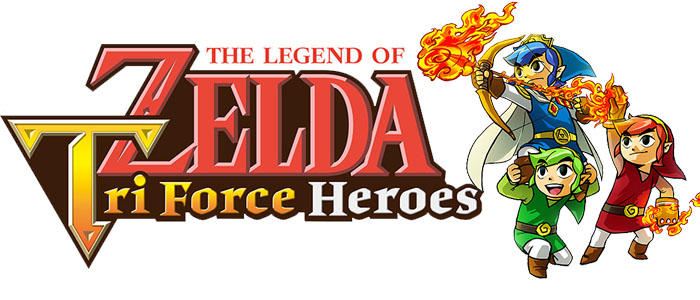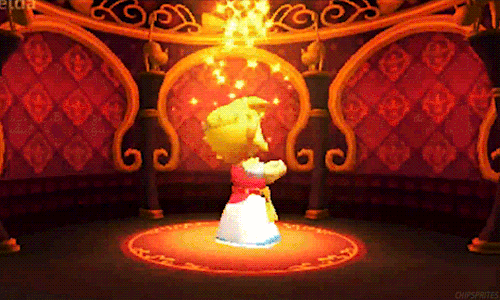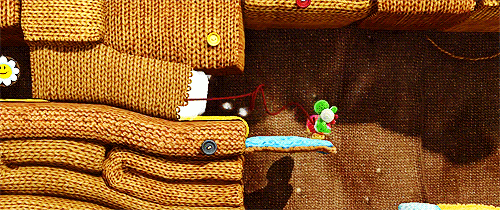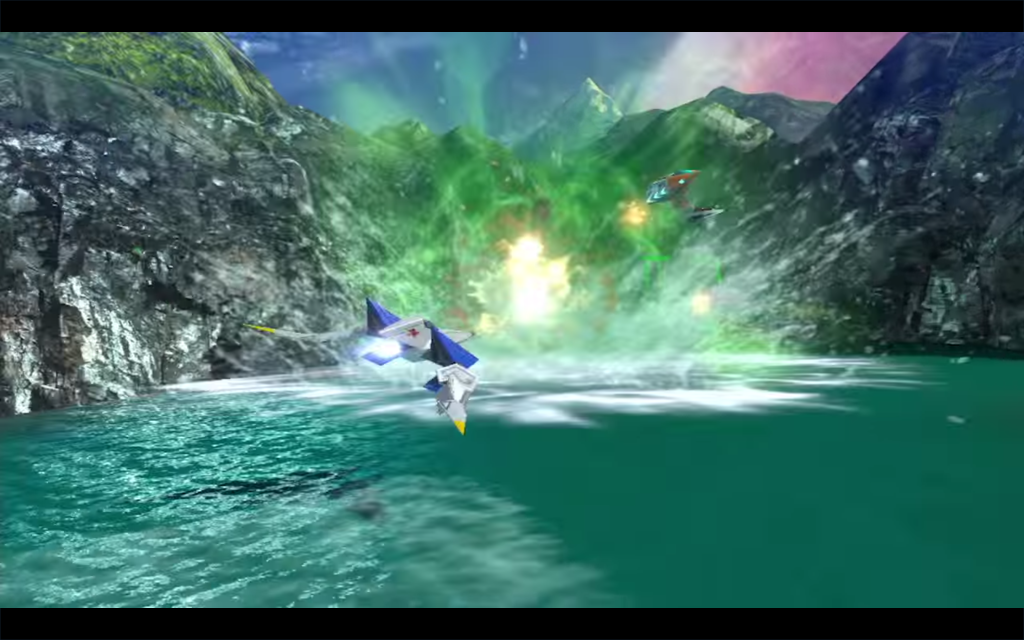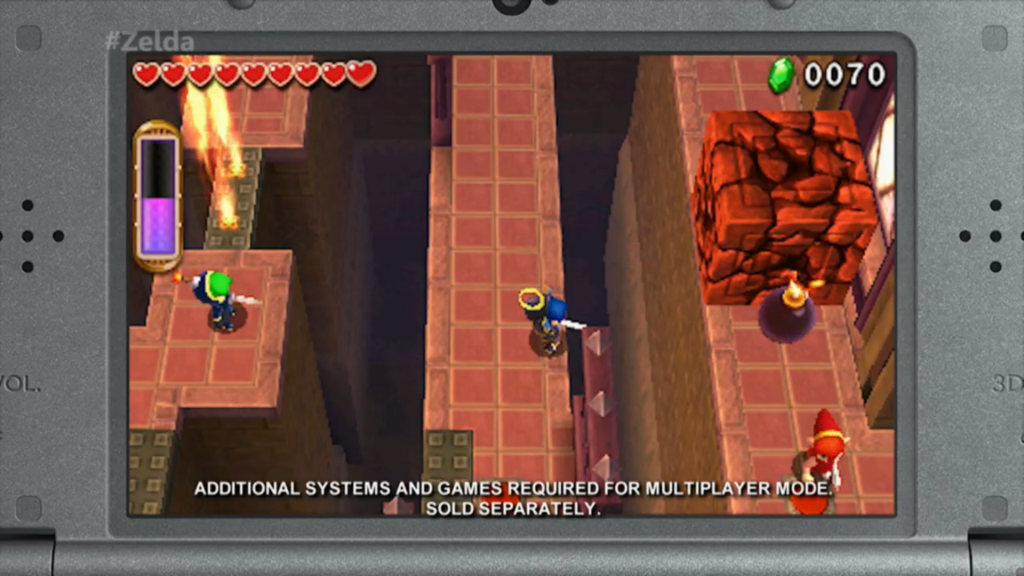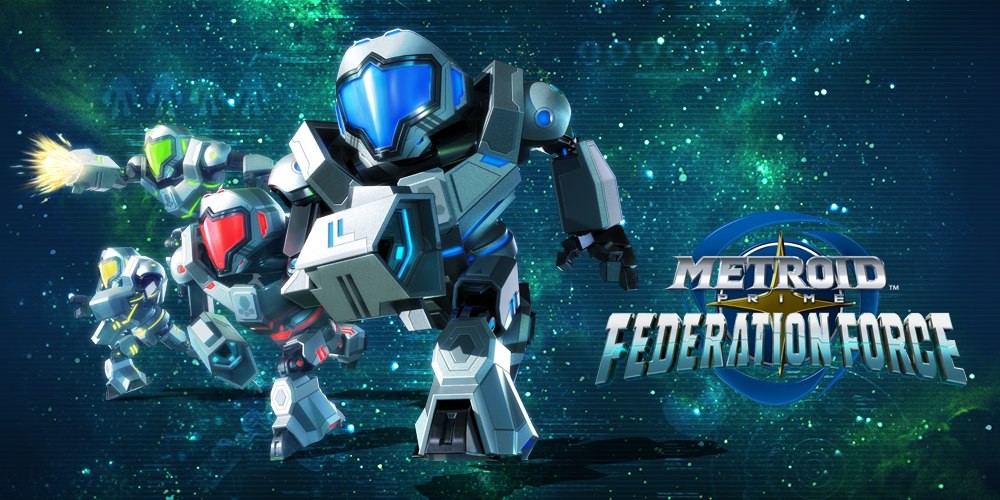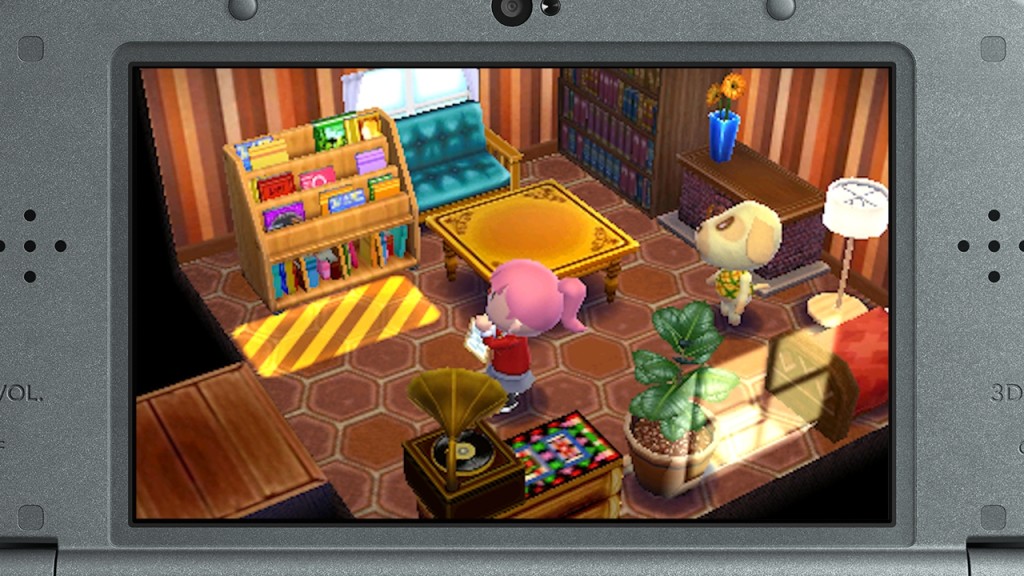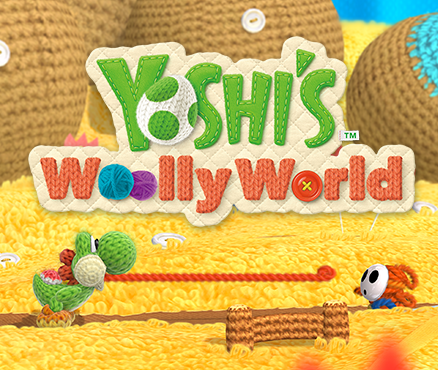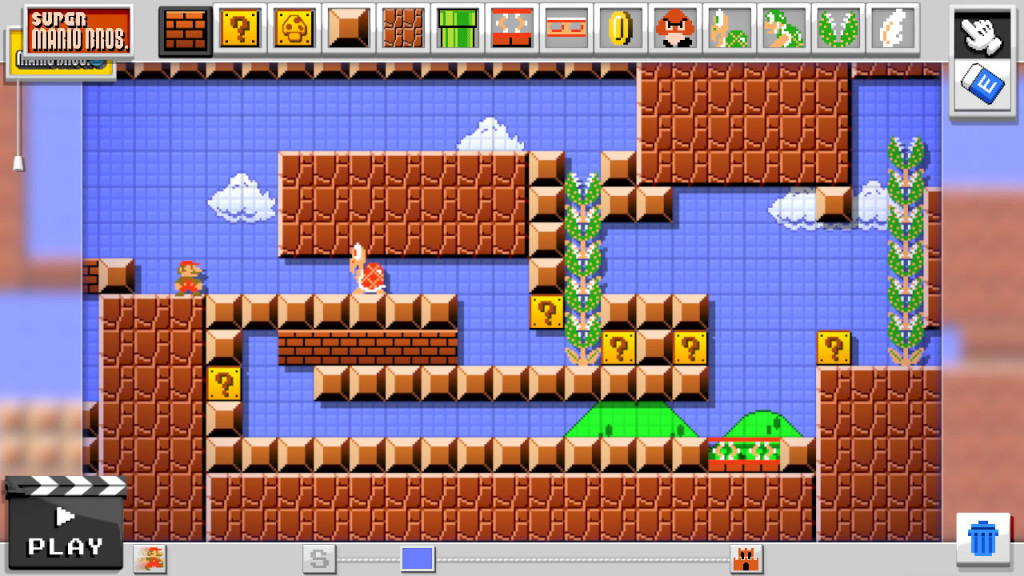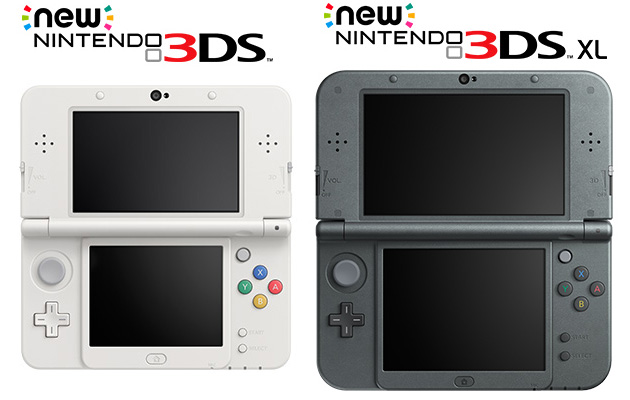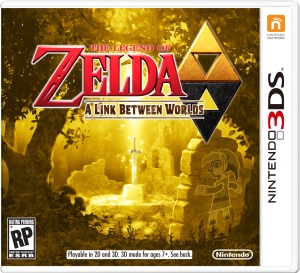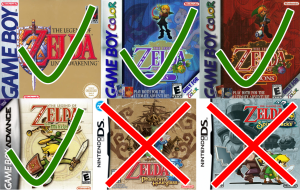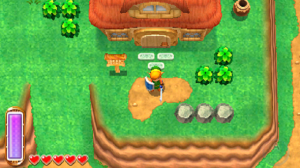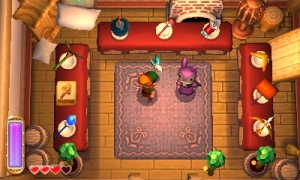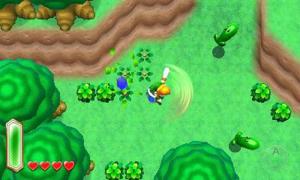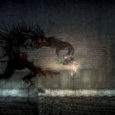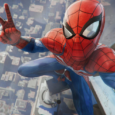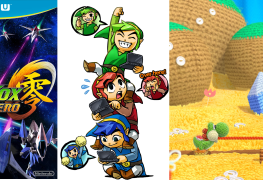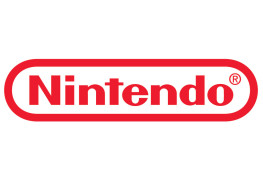
ASTRO Gaming, a leader in premium video gaming equipment, today revealed additional details surrounding the studio’s highly anticipated official Nintendo Switch™ A10 Headset. ASTRO Gaming confirmed the upcoming headset will feature The Legend of Zelda™: Breath of the Wild, celebrating a critically acclaimed title within one of the most iconic franchises in videogame history. ASTRO plans to reveal the new headset at the E3 Expo in Los Angeles, June 12-14 (MR-307) with availability coming later this year.
“With our new wired headset for the Nintendo Switch, we celebrate the iconic gaming experience that The Legend of Zelda: Breath of the Wild delivers to a new generation of gamers,” said Cris “Soup” Lee, head of licensing & partnerships, ASTRO Gaming. “We worked closely with Nintendo to create a stylish, uncompromising audio experience, with a special new chat adapter designed specifically for the Nintendo Switch. With the Nintendo Switch Online smartphone app, players can chat with their friends while playing compatible games at home or on the go.
ASTRO Gaming’s development of the new Legend of Zelda-themed Nintendo Switch headset stems from an exciting multi-year agreement with Nintendo announced in April. As part of the deal, ASTRO Gaming will develop a variety of special edition headsets, speaker tags and accessories celebrating some of the most iconic characters and franchises, including The Legend of Zelda™, Super Mario™ and more.
Arms
If you watched our live stream of the Nintendo Switch announcement, you will know that we did not have a kind word to say about Arms.
After having played the demo at PAX South, I may as well be Shrek – because now I’m a believer. For a game with such a strangely picked title and looking like the least fun game on Wii Sports, Arms has no business being as good as it is. The controls are responsive, the customizing of characters feels good, but isn’t overwhelming, and above all else, the game is really fun. I also have a feeling the developers knew it was kind of a goofy game. I mean, it’s called Arms and one of the characters is called Master Mummy. Someone is in on this joke.
The game is also surprisingly deep with strategy, given how much jumping, dashing, cancelling, and your special can really make or break a fight. Overall, it’s quite fun and actually gives you a bit of a work out if you’re competitive. The only downside is you need two pairs of Joycons to play it, and jeepers, those are expensive.
Arms will be out at launch for the Nintendo Switch on March 3rd.
https://www.youtube.com/watch?v=k7s3UB_8dFM
Splatoon 2
Did you like the first Splatoon? Good, because Splatoon 2 is just like that, but slightly better.
Remember when Left 4 Dead came out, then a year later Left 4 Dead 2 came out and it was almost identical, but had better stuff in it? That’s exactly what’s happening here. Splatoon is a great game that just didn’t reach a wide enough audience because the Wii U’s sales were so poor, so it’s actually a great idea to add some stuff to it and release a sequel on the Switch where the user base will be, presumably, much larger.
There’s not much different between the two games, other than the addition of the Splat Dualies, dual pistols that focus more on PvP than painting the ground. They give you the ability to dodge roll, which is pretty powerful especially if your opponent is using the gyroscope and having to contort their torso just to see you.
Splatoon 2 is out this Summer for Nintendo Switch.
Legend of Zelda: Breath of the Wild
It’s hard to say anything new about Legend of Zelda: Breath of the Wild. That being said, videos don’t quite do it justice.
We’ve watched trailers and gameplay videos showing the opening scene of Link coming into the world for the first time. It was impressive seeing it the first few times, but actually experiencing it live, immersed by the sound, experiencing that transition into the cut scene is like the first time you realize Final Fantasy VII doesn’t just take place in Midgar. Seeing Death Mountain way in the distance and knowing you can go there is mind boggling.
The game isn’t without its faults — some button mapping could use some work and if we’re being nitpicky, the lines on the edges of textures can be a little jagged — but none of it even comes close to tainting the sense of adventure, freedom, and wonder felt from the first time you pick up the controller.
In the short demo, we only activated a tower, fought some bokoblins, and did part of the magnesis shrine, but the world felt alive. The concerns about it maybe being too open and sparse may still prove to be correct, but at the present, no Zelda game has given us this many goosebumps since Ocarina of Time.
You can play Legend of Zelda: Breath of the Wild on either Nintendo Switch or Wii U March 3rd.
Want more PAX South 2017 coverage? All you had to do was ask!
Monster Boy, Warlock’s Tower, and Has Been Heroes
Prisma and The Masquerade Menace, Sundered, and RiME
Minit, Beat Cop, and Strikers Edge
Star Fox Zero
Ever since last year’s kinda-sorta reveal of a Star Fox game, fans have been clamoring for more details. The series hasn’t had a great entry in quite some time, and with the unique two-screen design of the Wii U, the hopes for this game were high. After playing the game at E3, we can assure you of one thing — if you’re looking for a true sequel to Star Fox 64, you got it.
The demo plops you down in Corneria where you learn how to control the Arwing. On first glance, duh, you know how to control the Arwing. That is, until you try to aim. You see, the second analog stick isn’t what you use to aim, that’s reserved for acrobatics and movement (boost, brake, banking, etc.). Your reticule is instead controlled by a combination of your movement and the Wii U Gamepad’s gyro. Like Splatoon, more precise aiming can be achieved by moving the gamepad about, but unlike Splatoon, the movement also shows you more depending on the mode you’re in. With All Range mode and the new Targeting mode, the gamepad gives you a cockpit view of your Arwing and allows you to shoot in any direction regardless of your current heading. Having a cockpit mode in which you can aim independent of your movement and see more than what’s on the top screen is useful for flyovers on ground enemies and dogfights. That being said, it does take getting used to and requires you to move about while sitting on your couch, something we’re not sure anyone is a fan of.
The only transformation we got to experience in the demo was into the ChickenWing (our name, not theirs), and while it wasn’t the most useful thing, it gives you new perspectives on the level by showing you areas you can’t access with the Arwing. The Corneria level culminates in a battle where you must destroy a ship from the inside and have to use the ChickenWing to do so. When you breach the structure, you’re met with a really simple boss that consists of a few whirling weak points that grant you the opportunity to really test the maneuverability of the land vehicle, and it actually feels pretty good!
All in all, if you were hoping for another game like Star Fox 64, then this game is for you. It’s a beautiful game that adds to the classic Star Fox 64 gameplay arsenal with transforming vehicles while also adding in the fresh element of the cockpit view.
Legend of Zelda: Triforce Heroes
Legend of Zelda: Four Swords was an add-on for the Legend of Zelda: A Link to the Past port for Gameboy Advance. The multiplayer Zelda title was so well received that it was then expanded on to make Four Swords Adventure, a full game in which you and your friends teamed up to take down puzzles and bosses. Now, Nintendo is releasing an all new multiplayer Zelda title called Triforce Heroes for your and your friends to hate each other in.
Though the rupee grabbing elements of the game seem to be gone, everything else is in tact, from picking up your fellow players to using your items in conjunction to solve puzzles. One interesting new element added to the game is costumes. Though they don’t seem to affect gameplay, they affect auxiliary things about the game, such as luck or damage modifiers. They also affect how super kawaii uguu~ you are.
The demo had three players work through a dungeon together. In our particular level, we were using the gust bellows and bombs to navigate across gaps, hit enemies from afar, and totem up to hit switches. All in all, this really seems like another Four Swords game, just running on the Legend of Zelda: Link Between Worlds engine. If you’re in to that sort of thing, and we definitely are, then you need not wait long, as it’ll be out later this year.
Yoshi’s Woolly World
Some games, you just know are going to be too cute for their own good. Kirby’s Epic Yarn was one such game, and now the fabric-texture cuteness sinks it claws into Yoshi in Woolly World.
As is with the previous two games, it seems Nintendo is taking a note from their past selves and bringing back the gameplay elements and feel from the Yoshi’s Island games to this new, saccharine title. One notable difference, and in our opinion improvement, is that you can do two player with a gamepad and a Wiimote, meaning more adorable Yoshi, more cute adventures, and new, slightly difficult puzzles to solve with your friends. The game feels very fluid, adds in some interesting fabric-based puzzles like platforms existing only when behind a piece of fabric that has a light behind it.
We’re sure there’s some amount of story here, but it doesn’t really matter. I mean, look at that guy. He’s slurping up yarn and pooping out yarn balls. How cute is that? Speaking of cute, while we were in line to play this, we spied the three Woolly World Amiibos, and they are just as cute and soft looking in person.
First off, let me just say they may have started off the show in the cutest way possible — by making Iwata, Miyamoto, and Reggie muppets. They’re adorable.
Star Fox 0
The new Star Fox gang puts us back in the pilot seat of the Arwing to take down the forces of presumably Andross. One of the maps shown in the trailer looks like a completely revamped Corneria. You can still tell it’s Corneria, but it’s so so much prettier and more detailed. The game has a few different modes, like Star Fox 64, including All Range Mode and a new Target Mode in which you get a cinematic view of the action on the TV and instead rely on the Wii U gamepad to fly and shoot.
In fact, there’s a lot of emphasis placed on the gamepad’s importance in the new Star Fox since it allows you to aim in a different direction than your flying with a cockpit view. It’s very clever, but potentially concerning for people who prefer a joystick camera if there’s no option for that. The game also features the return of the landmaster and the addition of transformations. The Arwing can transform into what look like a chicken robot to run about on the ground for sections that may call for it. In Corneria, there are some areas that are much more easily accessed via ChickenBot (our name not theirs). This title looks to be taking the Star Fox 64 legacy and innovating the crap out of it, something we, and fans of the series, deeply appreciate.
The Legend of Zelda: Triforce Heroes
You heard it! A new Legend of Zelda title coming to handhelds for everyone that’s missed Four Swords. In this title, you’ll take control of one of three Links to solve puzzles, kill baddies, and save Hyrule together as a team. The creator says instead of having a rupee-driven contest, the game has a more serious tone, like a normal Legend of Zelda title, just with two extra players. Another neat feature is that Link now has costumes, which will help distinguish your Link from your friends. We’re not sure if the costumes provide powerups, but Link can wear Zelda’s dress, which will definitely help people get his name right. You won’t have to wait long for the multiplayer chaos as The Legend of Zelda: Triforce Heroes comes out this Fall to Nintendo 3DS
Metroid Prime Federation Force and Metroid Prime Blast Ball
Everyone’s been clamoring for a new Metroid Prime title, but unfortunately, these are not the droids games you’re looking for. The cartoony graphics of Federation Force feel so far removed from the serious ton of Metroid Prime that it’s difficult to call it a Prime game. It seems to be a fine enough title, but there was no Samus in the trailer and nothing felt very Metroid-y. Same with Blast Ball, though that at least feels more like their earlier pinball title. The games are probably fine, we’re just really aching for a new Metroid game.
Animal Crossing: Happy Home Designer and Animal Crossing: amiibo Festival
For all you fans of the home building, town managing game series, Animal Crossing has a few new spinoff games to whet your appetite. First off is Happy Home Designer, which seems to be mostly about just designing and decorating homes. Looks like an Animal Crossing game, but without all the outside bits. If you hate the outside bits, that’s great, else, they have another title you may enjoy. Animal Crossing: amiibo Festival looks like a less hate-driven Mario Party in which your characters traverse a board to collect/dispense happiness. The winner is the one who has the most happiness at the end of the match. How adorable is that? It looks like it may be just an amiibo game, but this saccharine virtual board game should send fans into squee fits. Happy Home Designer will be on 3DS and amiibo Festival will be on Wii U soon.
Yoshi’s Woolly World
When the new Yoshi title was announced last year, fans took note of how much it looked like Yoshi’s Island and Kirby’s Epic Yarn had a baby. And that’s still true! This adorable platformer has you taking control of a wool plush of Mario’s best dino friend with some interesting mechanics to boot. Platform unravelling by slurping string, converting string to egg yarn balls, and super cute transformations make this title a lot more interesting than the previous entry in Yoshi’s series. Also the amiibos are absolutely perfect. Look forward to this game coming October 16th of this year.
Super Mario Maker
The concept of Super Mario Maker isn’t a new one — it’s been done tons of ways on the internet, most notably by Super Mario Brothers X. But since it’s a Nintendo game, there’s a lot to expect of the DIY Mario game. And it delivers. A stupid simple level editor, the ability to switch art assets and change Mario’s costumes using amiibos are all finishing touches on a strong, powerful engine to create your own Mario levels. Miyamoto also says it’s a great place for people to learn how to do game design through trial-by-fire, meaning if someone asks why you spend so much time in it, you can claim career development. Super Mario Maker will be available for download September 11th of this year.
While this year’s PAX South may have seen a resurgence of local multiplayer, that’s not to suggest that single player games didn’t have a strong showing. Here are the best solo-experience games we sat at PAX South 2015.
Legend of Zelda: Majora’s Mask 3D (and the new 3DS)
Remember when Legend of Zelda: Ocarina of Time 3D came out? Well this is that, but for Majora’s Mask.
Oh what, I need more detail? Fine. Selfish.
Just as with its spiritual predecessor’s re-release, Legend of Zelda: Majora’s Mask 3D features the same game you love with completely updated textures, bringing the game into the current generation in the most beautiful of fashions. And maybe I just didn’t notice the difference with Ocarina of Time, but Majora’s Mask looks even better because of an improved lighting engine that has Tatl casting shadows and brightening up spots nearby. You know, like a real light-casting mythical being. The improvements really make the game look gorgeous — even better than Ocarina of Time 3D.
The demo had Link with all three of his main character transformation masks in the middle of Clock Town. As I went around the city, I also noticed a lot more Bomber kids, and finally realized that there’s a new feature in the game which makes the Bomber’s Notebook way less useless. As you talk to more kids, they’ll give you tips on the goings on in town and hints on what to do next, so if you get stuck or really don’t remember how to start a quest line, chances are there’s a Bomber tip to help you out.
But wait, there’s more!
This demo was running on the new 3DS, the terribly named upgraded version of the 3DS with a faster processor and a camera nipple (or nub or whatever it’s called). I don’t really have a basis of comparison for whether or not the processor makes a difference, but the camera nubbly works like the ones on a laptop — you can’t really move it about, but you can press with varied intensity to whip the camera about in different directions. It wasn’t terrifically useful for Majora’s Mask as the camera is already pretty good, and it was impossible to use when rolling as a Goron, but it’s a nice feature to have for the rare times when you need it.
The improved, but often overlooked, 3D feature was also rather impressive. Instead of projecting to a static area in front of the machine, the new 3DS will track your head and point that area directly at you, meaning if you tend to move around a little bit, you don’t have to lose 3D viewing immersion. To be honest, though, even if it was a lot better than the previous iterations, it still wasn’t good enough to get me interested in keeping the 3D on from now on.
Release Date: February 13, 2015
Platforms: Nintendo 3DS
Light Fall
This side scrolling platformer looks visually similar to Limbo or Orphan in its separation of background and foreground. Where Limbo has stark greys against deep blacks, this game takes place at night, presumably for most of the game, so the foreground is black, whereas the background varies. It’s interesting to see the background be almost the center of visual attention for the game.
You play as a boy running across a dark world at night, jumping over obstacles and trying not to die. Your quest is narrated by someone who seems to be omnipresent and not happy about you being in his world causing a fuss. As the level progresses, the narrator seems to warm up to you, even giving some history to the landscape, slowly layering on story.
The mechanics are pretty traditional for sidescroller — running, double jump, and wall jump — but also feature a cube you can make appear below your feet if you triple jump. The cube adds an interesting dimension to platforming, but it’s scary as hell. I’m not sure if it’s because that’s how it works, or if it was buggy when I played, but about 10% of the time, the block wouldn’t appear below me when I jumped. I’m pretty sure it’s because the block didn’t have enough room to spawn, but that meant every triple jump was terrifying. You can also manually control the block to block lasers and go through obstacles, adding a neat puzzle solving element the game.
Overall, Light Fall was pretty fun and I’m looking forward to it coming out at some undetermined time in the future.
Release Date: TBD
Platform: TBD
Rebel Galaxy
Alongside local multiplayer games, it seems space fighters are also resurging. Rebel Galaxy is a lot less Rogue Squadron and a lot more Skyrim, featuring a quest system that will have you running all over the galaxy to do tasks for loot. It even allows the player to choose how they want to accomplish a mission. For instance, I did a quest where I had to pick up some whiskey from a transport ship. As I pulled up, the dev who was guiding me through the demo told me I didn’t have to pay for the whiskey, I could just kill the guy instead. And what’s better than free whiskey? I ended up decimating the guy and cleaning up before the police force arrived and I got in trouble. A scumbag bootlegger died, I’m taking dangerous liquid off the street, and the boys in blue have less work to do. Seems like a win win win to me. Really, I should be paid for my philanthropy.
The combat in Rebel Galaxy isn’t quite as fast paced as other space fighter games, rather taking a sort of Assassin’s Creed: Black Flag approach in which you need to maneuver this lumbering ship to hit the enemy with cannons on one of two sides, and always want to expose your most armored side in a fight. You can also toggle shields, hit with different weapons, or lock with one set of weapons and fire at one enemy and immediately after, shoot with a different weapon at another enemy. It may not be fast paced, but it’s really hectic and stressful. If it was any faster, I think it’d be unmanageable.
The game features a main quest line, a ton of side quests, and discoverable areas so while you’re cruising around space, you don’t get too bored ala the original Wind Waker. I kind of wish you could stumble on a quest and it gets added automatically to your list. The game may have that feature, but if it doesn’t, that’d be nice. The only other complaint is that you really don’t get to walk around at stations or have combat when not in a ship. Each station pops up as a menu, allowing you to purchase weapons, go to the bar for intel, or grab more quests. This system doesn’t really offer a break in action or any non-mission things to do so that you don’t get burnt out on fetch quests, making it dangerous that you’ll be inundated with so many quests of the same ilk, that you stop playing altogether. I don’t foresee it being a terribly big problem, but it would definitely be nice to see.
Release Date: 2015
Platforms: PS4 and PC. Maybe Xbox One (Dev’s words)
At one time, you couldn’t get a better handheld series port than Zelda. Link’s Awakening, the Oracle games, and Minish Cap were masterpieces in their own right, distinctly different from their console brethren, but equally as challenging and entertaining.
Then the DS came along and screwed it all up for everyone.
Phantom Hourglass is the second worst handheld Zelda ever created. Though it had the visual charm of Wind Waker, it captured none of the exploration and adventure, instead replacing a vast world with a central dungeon which needed to be beaten nigh-endlessly to get to its ending. This frustrating repetition on top of a less than stellar game made for an experience I care to not repeat. The only game worse than this was its successor Spirit Tracks, which decided if it made us go on set paths to get to areas to explore, it would somehow be better than a free roaming boat. Though the central dungeon idea was improved by removing its time limit and allowing you to skip previously played parts, the developers stuck to their guns of extending gameplay time at the expense of monotony. Bleh. The age of handheld Zelda darkness was upon us.
But hark, like the sun peering through a dark cloud break, a new game was announced. One that featured top-down adventuring ala the previous handhelds and was a sequel to one of my personal favorites, A Link To The Past. A Link Between Worlds promised to take us back to a familiar Hyrule and bring the series back to its roots. As wary as I was, I bought it on the hopes that just maybe the developers realized that exploration is a crucial part of gameplay and it’s a bad idea to have half your game consist of playing the same level ad nauseam. I popped it in the 3DS and braced myself for disappointment.
I’ve never been so happy to have my fears unfounded.
Okay maybe I have, but you get the picture.
Link to the Past Nostalgia, But Better
First off, just to hear the classic Link to the Past tune to start off the game brought a stupid grin to my face. And it didn’t stop as I started the game. This version of Link is the blacksmith’s apprentice, which makes you wonder how far it is in the future if the fame and deeds of his ancestor didn’t keep him from working, but I digress. You start off in the same house from Link to the Past, you have an almost identical world map to Link to the Past, and all the music is revamped versions of, you guessed it, Link to the Past. This game just screams nostalgia in the absolute best way possible.
Another feature that struck me almost immediately was the smoothness of gameplay. Not only do you have full range of motion instead of just 8, you can break pots with your sword, and the complete pause of gameplay when going upstairs has been removed. The sword swings also seem to be faster and produce such a crisp sound and fast effect, it feels noticeably quicker and more satisfying to cut down a bush. I know that sounds stupid, but when you try it you’ll know and be like “Man, AristoGamer, you were right.” And I’ll pull down my aviators while I power up my helicopter to fly over the ocean and say “I know, kid.”
The story is also quite interesting. An evil entity named Yuga is turning sages into paintings and it’s up to Link, who suddenly gets the power to merge into walls, to foil his plot and save Hyrule and another place whose name is too hilarious to spoil. The second half of the game (there’s always a second half to a Zelda game) features a compelling plotline and one of the best endings to a handheld Zelda game in some time.
Breaking New Ground By Reexamining Old Ground
For the first time in franchise history, you can complete the dungeons in any order you want! When I first heard that, my mind was blown. “A non-linear Zelda should not be possible”, my psyche screamed. It was quickly silenced by the logical addition of Ravio, an item salesman who runs a store out of your house to rent you weapons. That’s right, from the beginning of the game you can rent every single quest-critical item for a price. The only catch is when you die, the items get returned and you must pay for them again. You also don’t need to worry about ammo or magic for specific items, as their use takes away from one unified bar that refills. Though it doesn’t make much sense for arrows to use the same system as the fire rod, it’s much simpler and more streamlined. I definitely don’t miss running out of ammo halfway through a dungeon and having to scrounge for more. This novel system singlehandedly loosened up a series which didn’t need loosening, but benefited from it greatly. The resulting game is radically fun, figuring out what items you need and want for each place and placing emphasis on gaining rupees.
That’s another cool thing, not only do start with a rupee limit of 9999, but because they’re so important, you find yourself caring about getting them far more. Gone was the exasperating feeling of needing to purchase something—anything—to lighten your coin purse. With this system, I don’t think I ever had over 4000 rupees. It seems so simple to place more importance on something so ubiquitous between games, but it’s a smart choice that made even cutting down bushes more rewarding.
In fact, the only negative thing I have to say about this game is I don’t really like the way Link looks from the top down view. Look at his front coif and tell me they couldn’t scale that back just a smidge so we could better see his face. Just compare Link to the Past and Link Between Worlds and tell me one doesn’t look more limiting.
Also, the art style reminds me of what they did with the new Donkey Kong, Kirby, and Mario Brothers games—they all look kind of similar and shiny. Though it’s not as pronounced a problem in this title and it harkens back to Link to the Past, it still has that same plasticky feel that the New Super Mario Brothers has where I feel like Nintendo got a bit lazy on the art. But again, it’s not nearly as noticeable in Link Between Worlds as it is in the aforementioned series.
Verdict:
Even if you’re not a Zelda fan or just haven’t played Link to the Past, A Link Between Worlds is an excellent game that has one of the smoothest engines, best soundtracks, and most creative dungeons of the series. The nonlinearity of the game allows the player more freedom while smart design choices remove the small annoyances and increase fun just running around. If you have a 3DS and like Zelda games or adventure titles, this should absolutely be the next game you buy.





